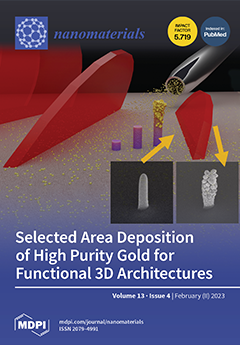As a representative sulfur-containing volatile organic compounds (S-VOCs), CH
3SH has attracted widespread attention due to its adverse environmental and health risks. The performance of Mn-based catalysts and the effect of their crystal structure on the CH
3SH catalytic reaction have
[...] Read more.
As a representative sulfur-containing volatile organic compounds (S-VOCs), CH
3SH has attracted widespread attention due to its adverse environmental and health risks. The performance of Mn-based catalysts and the effect of their crystal structure on the CH
3SH catalytic reaction have yet to be systematically investigated. In this paper, two different crystalline phases of tunneled MnO
2 (α-MnO
2 and β-MnO
2) with the similar nanorod morphology were used to remove CH
3SH, and their physicochemical properties were comprehensively studied using high-resolution transmission electron microscope (HRTEM) and electron paramagnetic resonance (EPR), H
2-TPR, O
2-TPD, Raman, and X-ray photoelectron spectroscopy (XPS) analysis. For the first time, we report that the specific reaction rate for α-MnO
2 (0.029 mol g
−1 h
−1) was approximately 4.1 times higher than that of β-MnO
2 (0.007 mol g
−1 h
−1). The as-synthesized α-MnO
2 exhibited higher CH
3SH catalytic activity towards CH
3SH than that of β-MnO
2, which can be ascribed to the additional oxygen vacancies, stronger surface oxygen migration ability, and better redox properties from α-MnO
2. The oxygen vacancies on the catalyst surface provided the main active sites for the chemisorption of CH
3SH, and the subsequent electron transfer led to the decomposition of CH
3SH. The lattice oxygen on catalysts could be released during the reaction and thus participated in the further oxidation of sulfur-containing species. CH
3SSCH
3, S
0, SO
32−, and SO
42− were identified as the main products of CH
3SH conversion. This work offers a new understanding of the interface interaction mechanism between Mn-based catalysts and S-VOCs.
Full article






